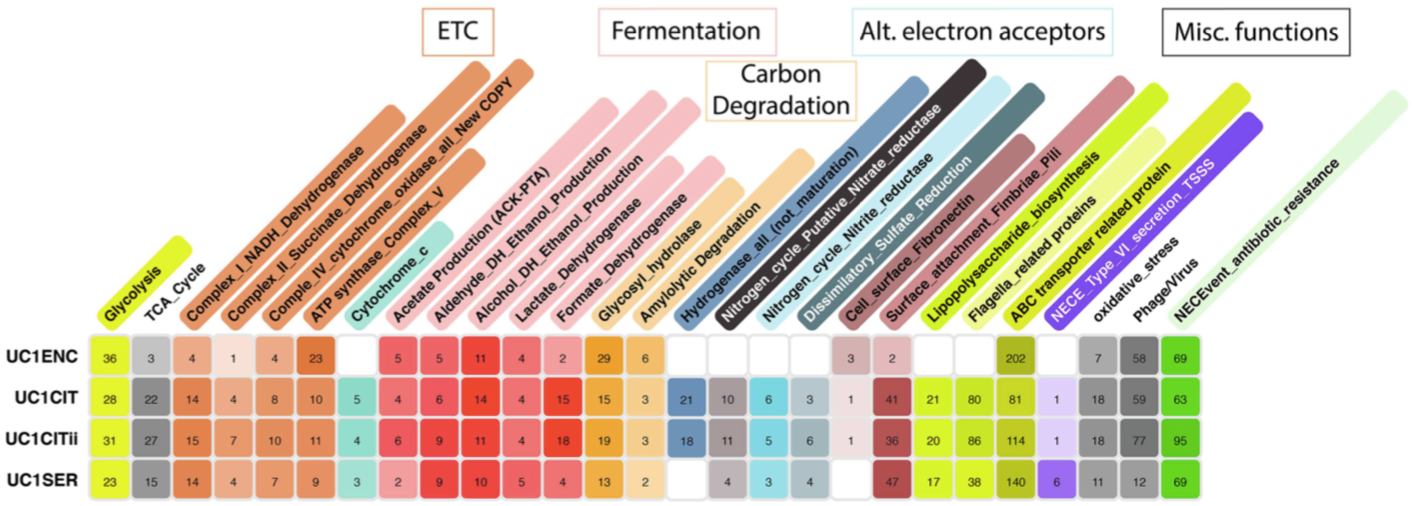PROTEOMICS OF PREEMIES 2015
We recently published a study looking at the metabolism of microbes in the gut of a premature infant using a metaproteomics technique.

Key Findings
1. Evidence of Oxygen in the Infant Gut
At this stage in the infant's development, there is evidence of oxygen in the gut. In adults, where most of our collective gut microbiome knowledge comes from, most microbes are performing anaerobic, largely fermentative, metabolisms. It has been hypothesized for a long time that the infant gut transitions from an aerobic to an anaerobic state early in life. Our data found evidence for both metabolisms, indicating that the infant has likely not transitioned at this stage in development. It also demonstrates the importance of niche separation in the nascent gut community.
2. Activity and Genome Abundance Are Not Always in Agreement
While this is not a new finding, it is a nice reminder that these microbial communities are complex and in a constant flux, competing for nutrients and physical space as founding colonizers of the infant gut.
3. Strain-level Competition in the Infant Gut
Strain-level competition in the infant gut is observable via metaproteomics. Several papers, including some from our lab, have described this in environmental samples, but this is the first demonstration of this in a preterm infant - to my knowledge. Generally, this builds on the growing evidence from our lab, and others, that strain level competition is pervasive in the gut, and the dynamics of this interplay is just beginning to be understood.